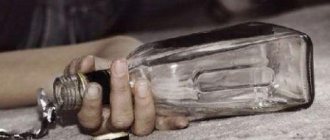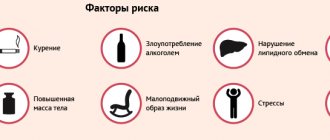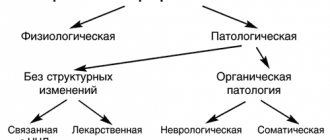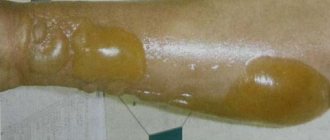What is bleeding?
Bleeding is the loss of blood that occurs due to damage to blood vessels. The integrity of blood vessels can be compromised by injury, purulent melting, increased blood pressure, and the action of toxins. Changes in blood chemistry can also cause bleeding. It is provoked by a wide range of diseases: sepsis, scarlet fever, hemophilia, jaundice, scurvy, etc.
When bleeding occurs in a body cavity (abdominal, pleural), it is called internal. Bleeding into tissue is called a hematoma. If any tissue is diffusely saturated with blood, we speak of hemorrhage (in the subcutaneous tissue, brain tissue, etc.)
There are several general classifications of bleeding.
According to the time of bleeding, there can be:
- primary (occur immediately after injury or tissue damage);
- early secondary (occurs a few hours or after injury, before infection enters the wound);
- late secondary (begin after the development of infection in the wound).
Depending on the severity and loss of blood, bleeding occurs:
- first degree (loss of circulating blood no more than 5%);
- second degree (loss of circulating blood about 15%);
- third degree (loss of circulating blood about 30%);
- fourth degree (loss of circulating blood more than 30%).
General information
Mechanical damage to blood vessels or thinning or disruption of the properties of the vascular walls causes bleeding. The degree of blood loss is determined taking into account individual factors (massiveness, speed, speed, duration of effusion) and the characteristics of the body. The occurrence of this pathology in many cases threatens human life.
In total, 4-5 liters of blood circulate in the body, of which up to 60% moves through the vessels, the rest, approximately 40%, fills the liver and spleen. Blood loss of 30% or more over a short period of time threatens a person’s life. Treatment of bleeding is often carried out by traumatologists, neurosurgeons, hematologists, and other specialists.
Symptoms of bleeding
Symptoms of bleeding depend on its type and the type of damaged vessels.
Arterial bleeding occurs when the arteries (carotid, femoral, axillary, etc.) are damaged. It is the most dangerous, since the blood is released very quickly, in a pulsating stream. Acute anemia quickly sets in; the color of blood is bright scarlet. The victim becomes pale, his pulse increases, blood pressure quickly decreases, dizziness, nausea and vomiting, and fainting appear. Death can occur due to oxygen deprivation or cardiac arrest.
Venous bleeding occurs when the integrity of the veins is damaged. The blood flows in a uniform, continuous stream and is dark cherry in color. If the intravenous pressure is not too high, the blood may stop spontaneously: a fixed clot will form. But bleeding leads to shock phenomena in the body, which often leads to death.
Capillary bleeding is the least dangerous and stops on its own. Blood oozes from the wound, no damaged vessels are visible. Capillary bleeding is dangerous only in diseases that affect blood clotting (hemophilia, sepsis, hepatitis).
Parenchymal bleeding occurs when all blood vessels in the wound area are damaged. It is dangerous, usually very strong and long-lasting.
Also, symptoms of bleeding may depend on the location of the wound. If bleeding occurs inside the skull, the brain is compressed, and a pressing sensation appears in the head, especially in the temporal part. Pleural bleeding (hemothorax) leads to compression of the lung and shortness of breath. Ruptures of the abdominal organs cause the accumulation of blood in it (hemoperitoneum): a person experiences abdominal pain, nausea and vomiting. Bleeding into the cavity of the cardiac membrane causes a decrease in cardiac activity and cyanosis; venous pressure is increased.
When bleeding occurs inside a joint, its volume increases. When palpating the joint or moving, a person feels severe pain. Interstitial hematoma is characterized by swelling, pain on palpation, and severe pallor of the skin. If treatment is not carried out in time, the hematoma will compress the veins, which can lead to the development of gangrene of the limb.
Types of bleeding by reason
There is a certain division of bleeding that occurs according to the reasons that cause it:
Mechanical bleeding
These include situations caused by changes in the integrity of blood vessels as a result of traumatic effects on them from the outside. This also includes combat injuries, as well as disorders caused by surgical operations.
The result can be heavy bleeding, sometimes taking a protracted nature. In certain cases, it is necessary to apply tight bandages to the wound in order to prevent further aggravation of the situation.
Arrosive bleeding
Such bleeding includes those that occur as a result of loss of integrity of the vessel, which occurs due to the fact that a tumor has grown through it; ulcer formation or necrotic changes in the tissues of the body can also cause similar changes.
Diapedetic bleeding
With such bleeding, there is no violation of the integrity of the blood vessels. However, an increase in the overall level of vascular permeability may be noted as a result of changes in the molecular composition of their walls. This situation is typical for a number of diseases, among which the most common are scarlet fever, poisoning with phosphorus and its vapors, and scurvy.
Arterial bleeding and first aid
Arterial bleeding is one of the most dangerous bleedings, posing a direct threat to human life. This is primarily due to the fact that blood loss is high and intense. Therefore, it is important to know its main signs and first aid rules.
Arteries are blood vessels; blood circulates through them and is delivered to all vital organs. If an artery is damaged as a result of any traumatic factor, then blood begins to flow out of it. It is not difficult to understand that arterial bleeding; it is characterized by such signs as: the blood is bright scarlet, its consistency is liquid, it does not flow out of the wound, but flows out in a powerful stream, similar to a stream in a fountain. There is always a pulsation that occurs in time with the contraction of the heart muscle. Since blood comes out very quickly, a person may experience vasospasm and loss of consciousness.
First aid algorithm for arterial bleeding
First aid rules will vary depending on where the injury is located and which artery was damaged:
- First of all, it is necessary to apply a tourniquet that will prevent blood loss. Before fixing it, it is important to press the injured artery to the bone, above the place where the blood is leaking. If the shoulder is wounded, the fist is placed in the armpit, and the arm is pressed against the body; if the forearm is wounded, place any suitable-sized object in the elbow crease and bend the arm as strongly as possible in this joint. If the thigh is wounded, the artery is pinched with a fist in the groin area; if the lower leg is wounded, a corresponding object is placed in the popliteal area and the leg is bent at the joint.
- The limb should be raised and a cloth should be placed under the tourniquet. When there is no rubber band at hand, it can be replaced with an ordinary bandage or strip of fabric. For a tighter fixation, you can use a regular stick.
- It is important not to leave the tourniquet on the limb too long; it must be removed after 1 – 1.5 hours, depending on the time of year. It is best to record the time of its application on paper and place it under the bandage. This must be done to prevent tissue death and amputation of the limb.
- When the time for wearing the tourniquet has expired and the victim is not hospitalized, it is necessary to loosen it for a few minutes. In this case, the wound should be closed with your hands using a clean cloth.
- Deliver the victim to a medical facility as quickly as possible, where he will receive qualified assistance.
The rules for assistance in the event of arterial bleeding from the feet and hands differ. In this case, there is no need to apply a tourniquet. It is enough to bandage the injured area and raise it higher.
When arteries such as the subclavian, iliac, carotid or temporal are injured, the blood is stopped using tight wound tamponade. To do this, either sterile cotton wool or sterile napkins are placed in the damaged area, then a layer of bandage is placed on top and wrapped tightly.
Read more: First aid for arterial bleeding
Complications
Blood loss itself is a consequence of an underlying disease or traumatic injury. Chronic bleeding causes persistent iron deficiency anemia, which manifests itself in chronic fatigue, depressed mood, decreased performance, brittle nails and hair, and frequent dizziness.
Due to its characteristics, the female body is more resistant to blood loss; the clinical manifestations of minor bleeding are not as obvious as in men.
It is always easier to prevent bleeding than to deal with the consequences. In everyday life, you should avoid injuries due to negligence, at work, do not neglect protective equipment, and on the street, be attentive and careful. Bleeding adds drama to any situation that tests the basics of medical knowledge and first aid.
Features of nosebleeds
Venous bleeding and first aid
Venous bleeding is characterized by the effusion of blood from the veins as a result of their damage. Veins carry blood to the heart from capillaries that supply organs and tissues.
To understand that a person has venous bleeding, you need to focus on the following signs: the blood is dark red or cherry in color. It does not pour out like a fountain, but flows out of the wound slowly and fairly evenly. Even if large veins have been injured and the bleeding is profuse, there is still no pulsation observed. If it does exist, it will be slightly perceptible, which is explained by the irradiation of impulses from a nearby artery.
Venous bleeding is no less dangerous than arterial bleeding. In this case, a person may die not only due to excessive blood loss, but also due to the absorption of air through the veins and its delivery to the heart muscle. Air entrapment occurs when inhaling during injury to a large vein, especially in the neck, and is called an air embolism.
First aid algorithm for venous bleeding
In this case, there is no need to apply a tourniquet and first aid rules boil down to the following:
- If a vein of a limb is injured, it must be raised up. This is done to reduce blood flow to the damaged area.
- Then you should begin applying a pressure bandage. For this purpose, there is an individual dressing package. If this is not at hand, then a clean napkin or cloth folded several times is applied to the wound, after which it is wrapped on top with a bandage. You need to put a scarf on top of the bandage.
- The place where such a bandage is applied is below the site of injury. It is important to apply the bandage tightly and in a circle, otherwise it will only provoke increased blood flow.
- The criterion for assessing the correctness of the actions performed is the absence of bleeding and the presence of pulsation below the wound site.
- When there is no clean tissue at hand, you should squeeze the injured limb in the joint as tightly as possible, or squeeze the area just below the blood outlet with your fingers.
- In any case, the victim should be hospitalized.
Sometimes, if the bleeding is severe, it cannot be stopped with a bandage alone. In this case, it is advisable to use a tourniquet. It is applied below the wound, due to the way blood is delivered to the heart muscle through the veins.
Read more: First aid for venous bleeding
What is the risk of bleeding for a person?
One of the most important, but by no means the only function of blood is the transport of oxygen and nutrients. It delivers them to the tissues, and takes metabolic products and carbon dioxide from them. With significant bleeding, there is a significant loss of this substance necessary for the body. The nervous system and heart muscle are very sensitive to oxygen deficiency. Brain death, when the flow of blood into it completely stops, occurs in humans and animals in just 5-6 minutes.
However, in addition to the immediate loss of precious oxygen-containing fluid, there is another problem. The fact is that it keeps the blood vessels in good shape and with a significant loss of blood vessels, they collapse. In this case, the oxygen-containing blood remaining in the human body becomes ineffective and can help little. This condition is very dangerous, it is called vascular shock or collapse. It occurs during acute severe blood loss.
Its consequences described above are life-threatening to the patient and develop very quickly after bleeding.
photo: wikihow
Blood performs a huge number of functions, among which very important are maintaining the balance of the internal environment of the body, as well as ensuring the communication of organs and tissues with each other by transporting various biologically active substances. In this way, billions of cells in the body exchange information and, as a result, can work harmoniously. Bleeding, to one degree or another, disrupts the constancy of the internal environment of the body and the functions of all its organs.
Often, blood loss does not directly threaten the patient’s life; this is observed in many diseases. In such cases, blood loss is chronic and mild. Replacement of the outflowing blood occurs through the synthesis of plasma proteins by the liver and cellular elements by the bone marrow. Bleeding becomes an important diagnostic sign for recognizing the disease.
Capillary bleeding and first aid
Capillary bleeding is the most common bleeding. It does not pose a threat to human life, since capillaries are the smallest vessels that penetrate all tissues and organs. It has its own distinctive features. The blood flowing from the capillaries has a bright scarlet color, the discharge is not intense, since the pressure in this case will be minimal, and there is no pulsation at all.
First aid algorithm for capillary bleeding
The rules for providing first aid for capillary bleeding are simple.
In this case, there is no need to apply a tourniquet; it is enough to do the following:
- Rinse and disinfect the wound.
- The injured area should be tightened tightly, but in such a way as not to disrupt the flow of arterial and venous blood, that is, not too much.
- Apply cold to the wound site, which will constrict the blood vessels.
If a person has a superficial wound and no other injuries, then he does not require hospitalization.
Read more: First aid for capillary bleeding
Can the body cope with bleeding?
Nature has provided for the possibility that fragile and delicate living tissues of the body will be injured over a long life. This means that a mechanism is needed to resist the flow of blood from damaged vessels. And people have it. Blood plasma, that is, the liquid part that does not contain cells, contains biologically active substances - special proteins. Together they make up the blood coagulation system. It is assisted by special blood cells called platelets. The result of complex multi-stage blood clotting processes is the formation of a thrombus - a small clot that clogs the affected vessel.
In laboratory practice, there are special indicators that show the state of the blood coagulation system:
- Duration of bleeding. An indicator of the duration of blood effusion from a small standard injury caused by a special stylet on a finger or earlobe.
- Blood clotting time - shows how long it takes the blood to clot and form a clot. Conducted in test tubes.
The normal bleeding duration is three minutes, blood clotting time is 2-5 minutes (according to Sukharev), 8-12 minutes (according to Lee-White).
Often, trauma or damage to a vessel by a pathological process is too extensive and natural mechanisms to stop bleeding cannot cope, or a person simply does not have time to wait due to the threat to life. Without being a specialist, it is difficult to assess the condition of the victim, and treatment tactics will vary depending on the cause.
Therefore, a patient who has severe bleeding from a vein or artery must be urgently transported to a medical facility. Before this, he must be provided with emergency assistance. To do this, you need to stop the bleeding. Usually this is a temporary cessation of blood flow from the vessel.
Parenchymal bleeding and first aid
Parenchymal bleeding is bleeding that occurs in internal organs, which is characterized by heavy blood loss. It can only be stopped through surgery. The organs of the parenchyma include the lungs, liver, kidneys, and spleen. Since their tissue is extremely delicate, even minor traumatization leads to heavy bleeding.
To determine parenchymal bleeding, you need to focus on the following signs: general weakness, dizziness, fainting, pale skin, low pulsation with rapid heartbeat, drop in blood pressure. Depending on which organ was injured or diseased, parenchymal bleeding of the lungs, liver, kidneys, etc. may be suspected.
First aid algorithm for parenchymal bleeding
Since this type of blood loss is life-threatening, you must act quickly:
- The victim must be sent to a medical facility as soon as possible. If it is not possible to call an ambulance, then you need to go on your own.
- Neither pressure bandages nor the application of tourniquets in this case will have an effect on the amount of blood lost.
- Until the medical team arrives, the person needs rest. To do this, you need to lay it in a horizontal position and slightly raise your legs.
- Cold should be applied to the area where bleeding is suspected to have occurred. If transportation of the patient to a medical facility is delayed, then you can use such agents as: Vikasol, Etamsylate, Aminocaproic acid.
Only a surgeon can stop parenchymal bleeding. Depending on the nature of the damage, complex sutures will be applied, emobilization and electrocoagulation of blood vessels, suturing of the omentum and other surgical methods will be performed. In some cases, parallel blood transfusions and the use of saline solutions are required.
How to stop bleeding from the femoral artery?
Simple actions that will save lives when bleeding from the femoral artery:
- Signs of bleeding from the femoral artery: bleeding from a wound on the leg, in which the pool of blood increases to 1 m in a matter of seconds.
- Immediately press the arteries below the inguinal ligament with your fist, then press with a hard object (for example: a rolled bandage), through which apply a tourniquet to the thigh. Include a note with the time the bandage was applied. The tourniquet must not be removed until medical workers arrive, even if their arrival is delayed.
- Bleeding from the femoral artery for more than 2-3 minutes leads to death.
Source: “ Health-saving magazine ”
Gastrointestinal bleeding and first aid
Gastrointestinal bleeding deserves special attention, as it is a life-threatening condition. It is important not to miss the first signs of such blood loss and seek help from a specialist in time. Among them are the following: bloody vomiting with brown impurities, the presence of loose bloody stools, pale skin, increased heart rate with low blood pressure, general weakness accompanied by dizziness, and sometimes loss of consciousness.
First aid algorithm for gastrointestinal bleeding
In order to stop gastrointestinal bleeding, the person must be taken to the hospital.
However, first aid will include the following:
- A person needs complete peace. To do this, it is best to put him in bed.
- A cold heating pad or ice pack should be placed on the abdominal area.
- You can chop up some ice and give it to the person in small portions to swallow.
- Take the victim to the hospital.
Read more: Causes, symptoms, first aid and diagnosis of gastrointestinal bleeding
General classification
The division of bleeding into different types is of great expediency due to the ease of determining treatment tactics at different stages of medical care. Wherever she finds herself, all doctors know her clear algorithm. This approach minimizes the time spent and minimizes the amount of blood loss. People who are not involved in medicine should also know the main features and possible types of bleeding in order to help themselves or their loved ones if necessary.
The classification is given in table form.
| External bleeding (bleeding with direct contact with the external environment) | Internal bleeding (the spilled blood does not have direct contact with the environment) |
|
|
| According to the amount of blood loss during any bleeding | |
| |
Diagnostic methods
All women are recommended to keep a cycle calendar, which will help identify failures of the female reproductive system in time.
If you experience prolonged periods (more than 7 days), discharge of blood clots, or unnatural pain in the lower abdomen, you should immediately consult a doctor for a diagnosis. Identifying the cause of bleeding is not always easy, so in addition to the gynecologist, you may have to visit the following doctors:
- Endocrinologist
- Oncologist
- Teen doctor (if bleeding is in a teenager)
To diagnose uterine bleeding, a number of laboratory and instrumental studies may be needed:
- General urine analysis;
- Blood chemistry;
- Blood test for hormones;
- Ultrasound of the uterus and appendages;
- Electroencephalography with orthostatic tests;
- Rheoencephalography;
- Vaginoscopy;
- Vulvoscopy;
- Hysterosalpingography;
- Cervical biopsy;
- Puncture of the posterior vaginal fornix.
! If intense bleeding occurs, you should immediately call an ambulance. Especially if it occurs for the first time or the woman is pregnant. Remember that in such situations, any minute can be decisive.











